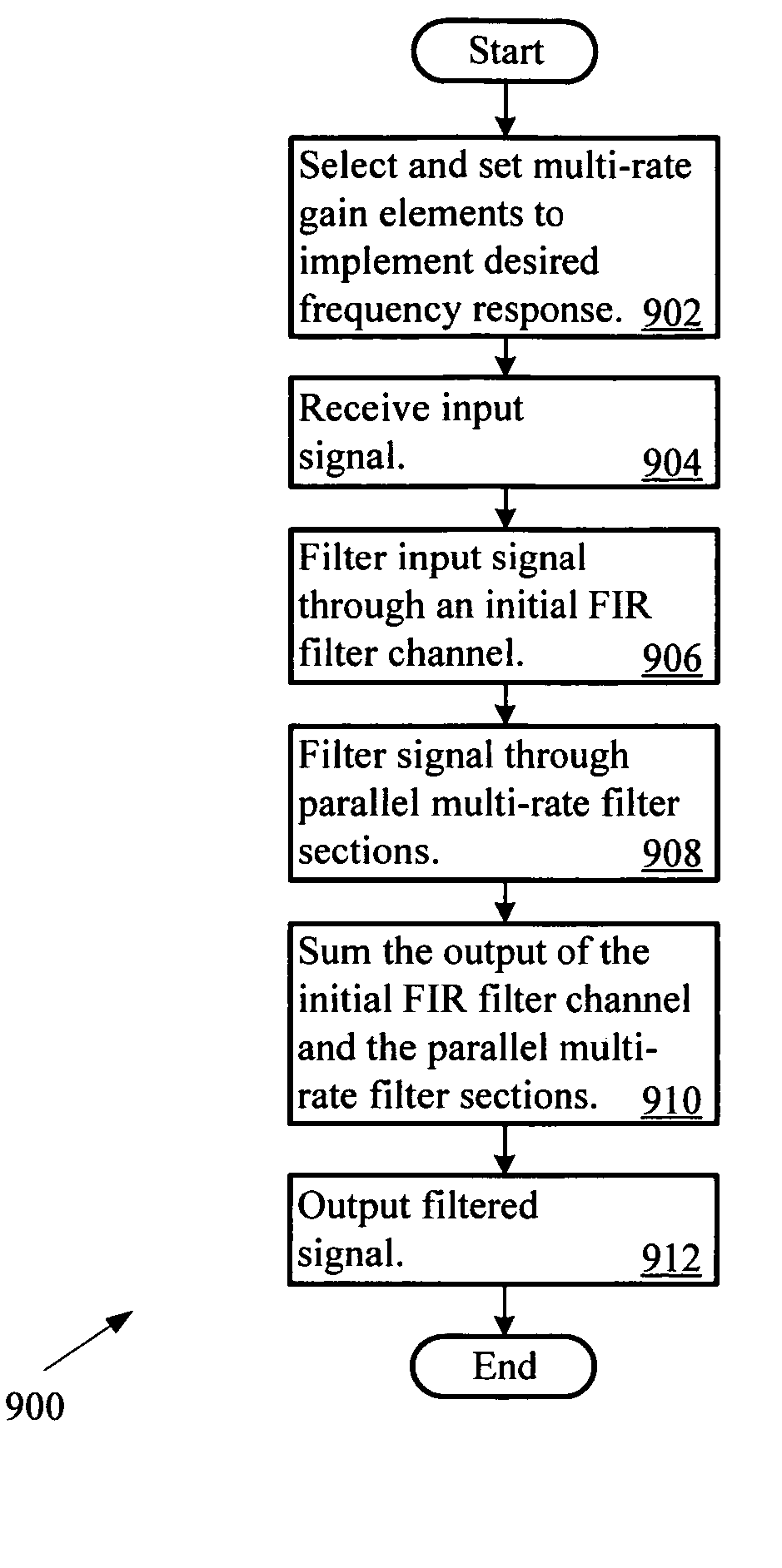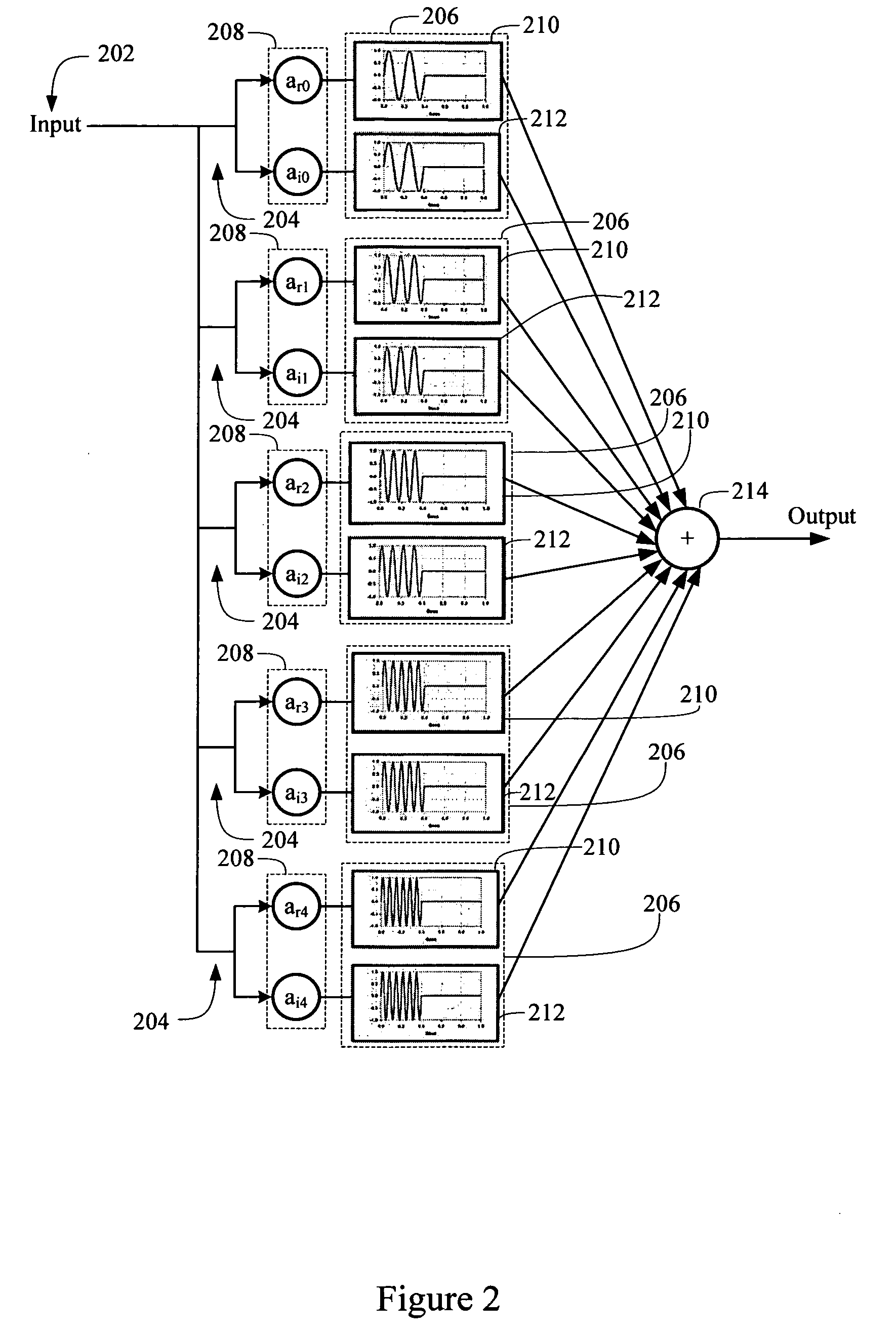Log-sampled filter system
a filter system and filter technology, applied in the field of digital filters, can solve the problems of high complexity of fir filters, excessive time or frequency resolution, and excessive sampling of low frequency components
- Summary
- Abstract
- Description
- Claims
- Application Information
AI Technical Summary
Benefits of technology
Problems solved by technology
Method used
Image
Examples
Embodiment Construction
[0028]FIG. 1 shows an example signal processing system with filter logic. The system receives an input signal from a signal source 100. In many cases, the signal source 100 may provide a continuous signal, such as an electrical signal from a transducer. For example, where the signal source 100 provides a continuous signal, the system may sample the input signal with a continuous to discrete sampler 102. The sampler 102 converts the continuous signal into a discrete-time signal (i.e., digital signal).
[0029] The system may include a filter logic 104 configured to filter the discrete-time signal. For example, the filter logic 104 may be configured as a low pass, high pass, bandpass or other filter. The filter logic 104 may be implemented in hardware and / or software. However, the filter logic 104 may be implemented with less hardware and software resources than traditional filters. The filter logic 104 may include discrete logic or circuitry, a mix of discrete logic and a processor whi...
PUM
 Login to View More
Login to View More Abstract
Description
Claims
Application Information
 Login to View More
Login to View More - R&D
- Intellectual Property
- Life Sciences
- Materials
- Tech Scout
- Unparalleled Data Quality
- Higher Quality Content
- 60% Fewer Hallucinations
Browse by: Latest US Patents, China's latest patents, Technical Efficacy Thesaurus, Application Domain, Technology Topic, Popular Technical Reports.
© 2025 PatSnap. All rights reserved.Legal|Privacy policy|Modern Slavery Act Transparency Statement|Sitemap|About US| Contact US: help@patsnap.com



